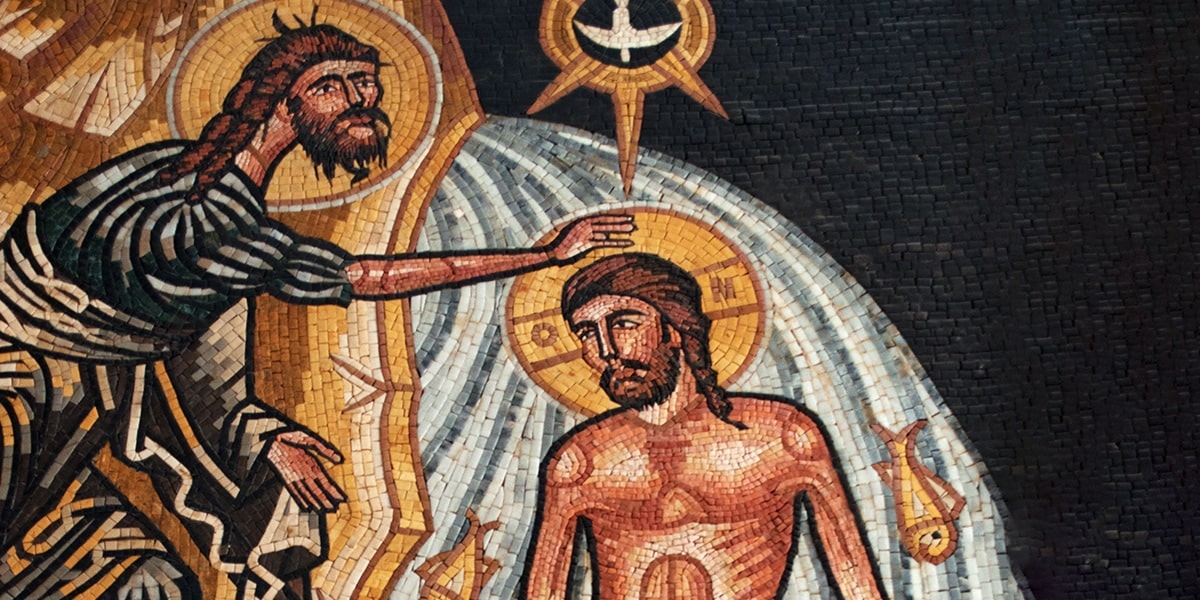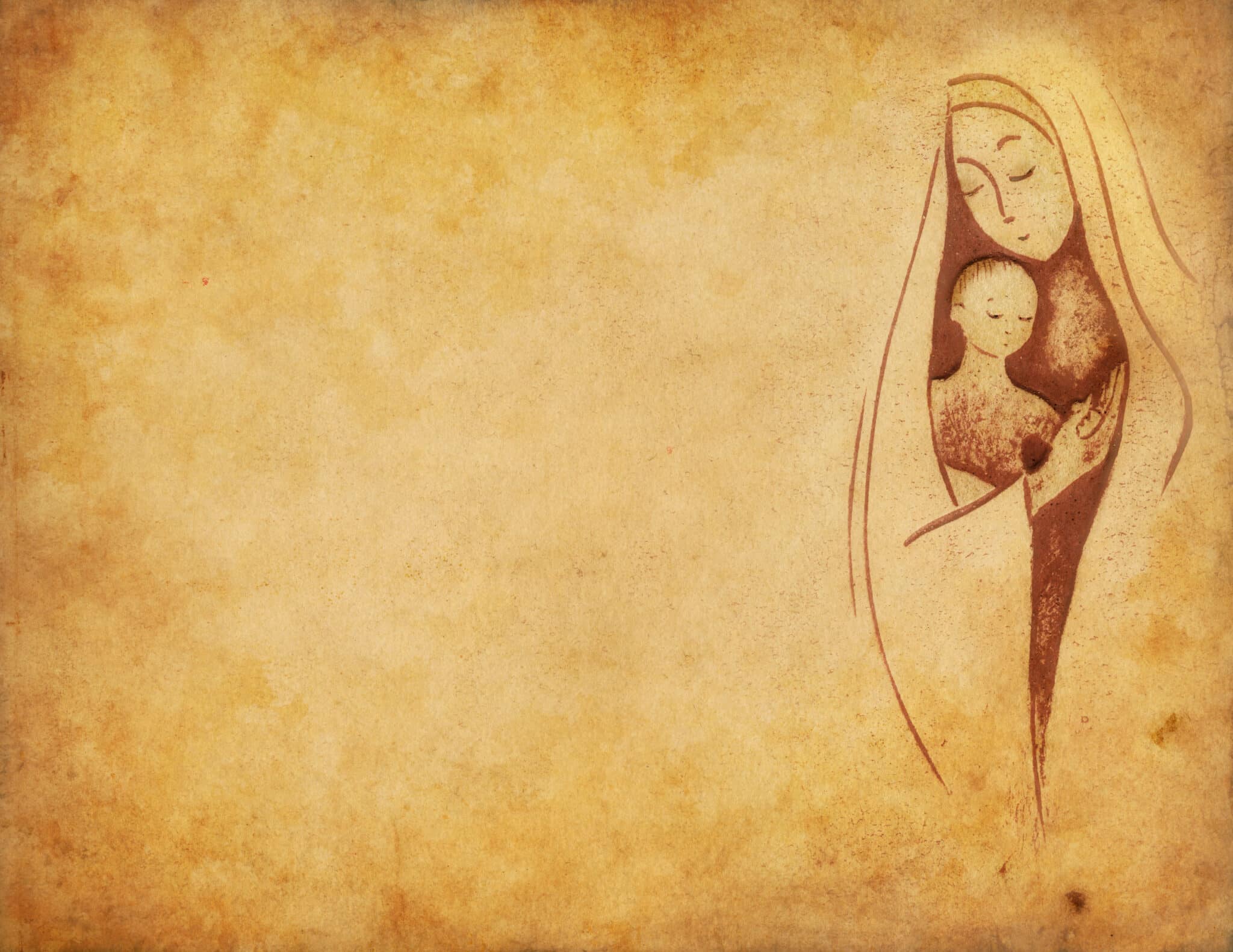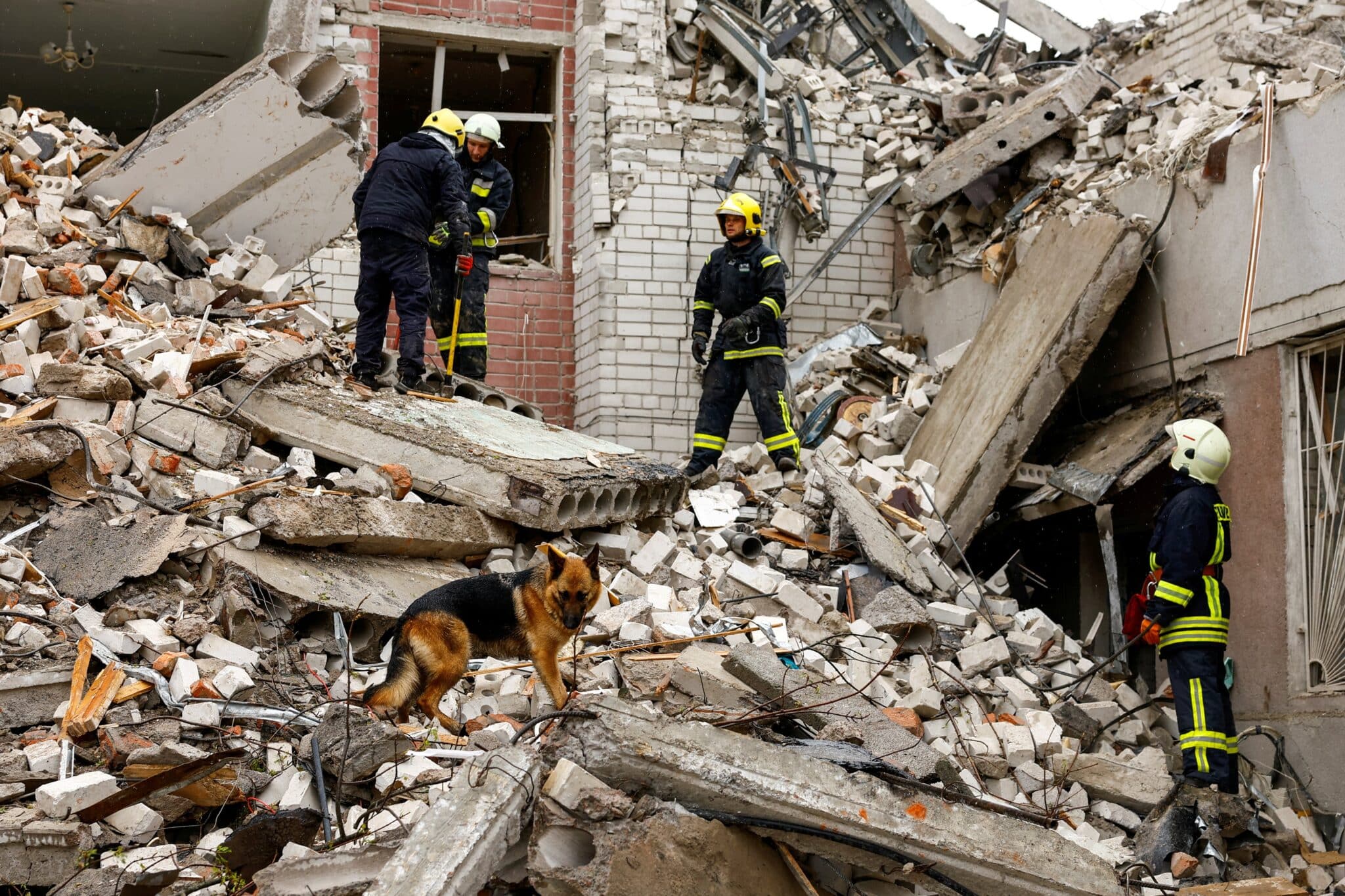The Five Luminous Mysteries
1. Baptism of Jesus. Jesus’ baptism in the Jordan River illuminates not only Jesus’ identity as God’s beloved Son, but it also reveals with bright clarity his mission as Messiah—the anointed one—as well. When Jesus was baptized by John the Baptist, he was anointed by his heavenly Father “with the Holy Spirit and with power” (Acts 10:38). When the evangelist John described the descent of the Holy Spirit upon Jesus, he placed these words on the lips of the Baptist: “I saw the Spirit come down like a dove from the sky and remain upon him” (Jn 1:32). The word remain in this context emphasizes the permanence of this ongoing relationship of God’s Spirit with us as well.
2. The Wedding at Cana. Jesus caused quite a stir at Cana when he changed the water into wine. The Jerusalem Bible explains to us, in a footnote, why Jesus worked this and other signs. Jesus worked them to strengthen our faith in his divine mission. The evangelist writes that Jesus “let his glory be seen, and his disciples believed in him” (Jn 2:11b). At special times, such as at his Baptism, as well as in this “first sign” at Cana and at the Transfiguration, the divine glory shines through brightly. We get a glimpse of God’s light and saving presence breaking into our world. And when Mary tells Jesus, “They have no wine,” she seems to be causing something else—besides the changing of water into wine—to happen as well. She is very much like a mother bird nudging her fledgling to take that first flight from the nest.
3. Jesus’ Proclamation of the Kingdom. If there is one central image that ties together the five Mysteries of Light, it is the Kingdom of God. A simple way to understand the Kingdom of God is to see it as God’s saving presence in our world. In each of the new mysteries—Jesus’ baptism, his sign at Cana, the proclamation of the Kingdom, the Transfiguration, and the Eucharist—we are witnessing examples of God’s saving love and presence breaking into our world. It’s helpful to recall, at the same time, that the name Jesus means “Yahweh saves.” Jesus’ saving presence among us, therefore, is the perfect embodiment of the Kingdom of God.
4. The Transfiguration of Jesus. To set the scene for this mystery, we see Jesus inviting Peter, James, and John to withdraw with him from the busy plane of everyday life and come to a high mountaintop. Pope John Paul II called the Transfiguration, “the mystery of light par excellence,” presumably because, during this exalted event, the glory of Jesus’ divine nature shown brilliantly through his humanity, totally transfiguring Jesus. As the Gospel of Matthew put it, [Jesus’] “face shown like the sun, and his clothes became white as light” (17:2). The event reminds us that Jesus is truly divine as well as truly human.
5. The First Eucharist. The final Luminous Mystery takes us to Jesus’ last supper, where he shares his very self with his disciples in the form of bread and wine. This holy meal unites us in love with God and with one another so that we become the one body of Christ. Jesus’ essential gesture at the Eucharist is his handing over his body and blood to the community gathered around him. After Jesus does this, he says, “Do this in memory of me.” He is not saying simply that we should repeat this liturgical ritual. He also wants us to repeat what he has done for the community during his life here on earth. He has, literally, handed himself over to them. We are being asked in our own day to hand over our bodies as well—in loving service to the Christian community.
Next Month: The Joyful Mysteries








1 thought on “Reflections on the Luminous Mysteries”
Completely agree. And the addition of the notes on scripture and the subtle yet key words that suddenly jump out and provide more depth and meaning, a greater understanding.